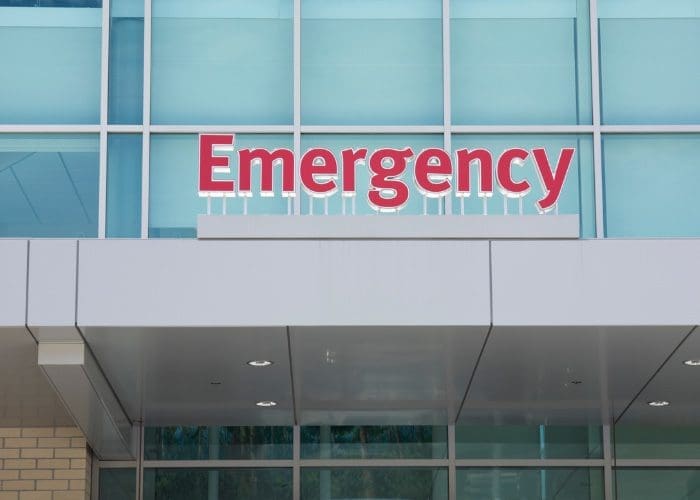 At this point, my family has lost count of the number of times we have been to the emergency department at our local hospital. We have been in for stitches on various body parts, breathing issues (see my post ‘Catching our Breath: Relief in an Asthma Diagnosis’), possible broken bones, and times when we weren’t sure what was wrong. I was recently in with my son for another asthma admission, immediately followed by a possible broken bone visit. My family jokes that we should get a punch card so that someday we can get a free visit.
At this point, my family has lost count of the number of times we have been to the emergency department at our local hospital. We have been in for stitches on various body parts, breathing issues (see my post ‘Catching our Breath: Relief in an Asthma Diagnosis’), possible broken bones, and times when we weren’t sure what was wrong. I was recently in with my son for another asthma admission, immediately followed by a possible broken bone visit. My family jokes that we should get a punch card so that someday we can get a free visit.
I am not sure why we frequent the emergency department so much. Maybe it is because I have 3 boys; or maybe my 3 boys are particularly accident prone; or maybe the chronic disease of asthma has added up to way too many visits. It is likely a combination of all of the above. But no matter the reason, I feel fairly comfortable (and a little humbled) that I consider myself an ’emergency department expert’. I hope you don’t ever end up in the emergency room, but if you do here are some things to consider:
- Making the call – Truly, this is the hardest part of the emergency room – deciding when you need to go. It is something that will haunt you for at least the next week or two after. My husband and I usually go back and forth about it. Do we NEED to go in or not? Here are a few things I have started thinking about before we go the emergency room: Is there somewhere else we can go that is a few steps down from emergent care?Could we wait a few hours or till tomorrow to be seen in primary care? Is this something that could improve with time and supportive home cares? If the answer to all of these questions is ‘no’, then the emergency department is unavoidable.
- Call the nurse triage line – My hospital has a nurse available almost 24/7 to help answer questions. I do have a nurse and x-ray tech in the family that I rely on, but when I feel like I need a more in-depth assessment of the situation, I call the triage line. The nurses are always helpful and will usually give it to me straight.
- If you have to go, go before you feel panicked – Since my husband and I don’t always agree on when we need to go in, there have been several drives that have been less than ideal; even downright scary. If I can give other moms any advice, I would definitely suggest going in sooner vs later. There is nothing worse than watching your child suffer or struggle in the back seat.
- If you cannot safely drive with whatever is going on for your child in the backseat, call for an AMBULANCE – There was an instance once where I was getting in the car with a child who was struggling to breath so significantly that I didn’t think I could concentrate on the road enough to get us to the emergency room. I made the call to not drive and let the help come to us. It is important to note that you will not get charged for calling the ambulance, only if you actually take a ride in one. The paramedics are great at offering insight and recommendations about if it is safe to travel on your own. They will always give you the option.
- Take advantage of Valet parking (if available) – Depending on the level of your emergency, finding a parking spot may or may not be something you have time for. My local hospital has valet services for those times when I just wanted to stay with my child. It was money well-spent.
- Utilize Child Life services (if available) – My hospital has something called ‘child life services’. They are professionals who are trained to help guide children and families through difficult circumstances. They do things like: bring kids toys to play with, offer tablets with games to distract them during procedures or lab draws, and they are really great at supporting parents. We love them!
- Log into the facility WIFI – There were lots of times that our room in the emergency department was located deep in the bowels of the hospital, meaning not great cell service. I would often get texts that bounced back or wouldn’t send at all. Communicating with loved ones about what is happening is vital – so logging into the facility WIFI made it possible to get messages out. Most places have guest WIFI for free.
- Pack snacks – It never fails that our incidents happen just before supper time. I have rushed to pack snacks before heading out a few different times. I was never sorry I did.
- Be prepared to wait – I am pleased to say that I have never waited very long for a visit when it was for one of my boys. They tend to prioritize pediatric visits. But there were still plenty of times when we got a room but had to wait to be seen by the doctors. Or we had a treatment and needed to wait to see the result. Influenza, RSV, and COVID tests also take an hour to come back. Either way, bring a book!
- Listen to your gut – This tip is something I have come to learn from having repeat visits for the same reason. My son Monroe was diagnosed with asthma last year and we had plenty of visits for his breathing before his official diagnosis came. There were times when they cleared him to leave even though I wasn’t 100% convinced he would do better at home. Those were the times we ended up back in ER for a second time on the same day. If I had listened to my gut and expressed my concerned, I could have saved us the struggle at home as well as the second charge on our insurance. Moms have special intuition – use it!
- Follow up with Primary Care after your visit – My hospital always recommends a follow-up with primary care after an emergency room visit. I have found these appointments to be helpful. It is a time to ask follow-up questions and to make sure progress is being made in the right direction.
- Don’t apologize for going in – This kind of ties back to tip #1. There are no perfect calls when it comes to parenting and the emergency department. There will be times when the visit is truly needed and times when it turns out, the hand is not actually broken. No matter the result, don’t apologize for going in… it’s what they’re there for!
The content on Rochester Mom is not intended to be a substitute for professional medical advice, diagnosis, or treatment. Always seek the advice of your physician or other qualified health provider with any questions you may have regarding a medical condition. Never disregard professional medical advice or delay in seeking it because of something you have read on this website.

